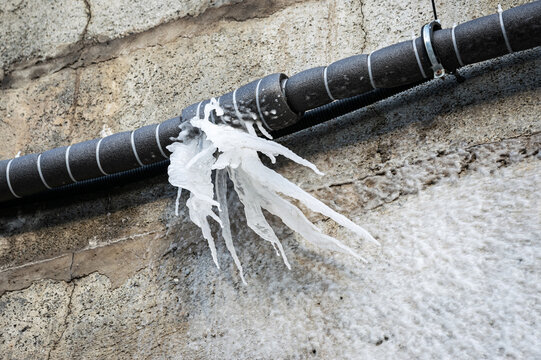Ways to Protect Pipes from Freezing: Expert Tips
Ways to Protect Pipes from Freezing: Expert Tips
Blog Article
The content listed below in relation to Preventing and dealing with frozen pipes is highly interesting. Don't skip it.

Cold weather can damage your pipes, particularly by freezing pipes. Here's how to stop it from occurring and what to do if it does.
Intro
As temperatures decrease, the risk of icy pipes increases, potentially leading to costly repairs and water damage. Recognizing exactly how to stop icy pipes is critical for home owners in cold environments.
Prevention Tips
Protecting at risk pipelines
Cover pipes in insulation sleeves or use heat tape to protect them from freezing temperature levels. Concentrate on pipelines in unheated or external areas of the home.
Home heating strategies
Keep indoor spaces sufficiently heated, specifically areas with plumbing. Open closet doors to enable cozy air to flow around pipes under sinks.
Just how to determine icy pipes
Try to find lowered water flow from taps, uncommon odors or sounds from pipes, and visible frost on exposed pipes.
Long-Term Solutions
Architectural modifications
Consider rerouting pipes far from exterior walls or unheated areas. Include extra insulation to attics, basements, and crawl spaces.
Updating insulation
Invest in top notch insulation for pipelines, attic rooms, and walls. Correct insulation assists keep consistent temperature levels and reduces the danger of icy pipelines.
Securing Exterior Plumbing
Garden hoses and outdoor faucets
Detach and drain pipes yard hose pipes prior to winter. Install frost-proof spigots or cover exterior faucets with protected caps.
Recognizing Icy Pipes
What causes pipes to freeze?
Pipes ice up when revealed to temperatures listed below 32 ° F (0 ° C) for prolonged durations. As water inside the pipelines freezes, it increases, putting pressure on the pipeline walls and possibly triggering them to break.
Risks and problems
Frozen pipes can cause water system disruptions, property damages, and expensive repairs. Burst pipelines can flooding homes and create substantial structural damages.
Indicators of Frozen Pipes
Recognizing icy pipelines early can avoid them from rupturing.
What to Do If Your Pipelines Freeze
Immediate activities to take
If you believe frozen pipelines, keep faucets open up to eliminate pressure as the ice thaws. Use a hairdryer or towels soaked in warm water to thaw pipes slowly.
Conclusion
Preventing icy pipes needs aggressive steps and fast feedbacks. By recognizing the causes, signs, and safety nets, homeowners can secure their pipes during cold weather.
5 Ways to Prevent Frozen Pipes
Drain Outdoor Faucets and Disconnect Hoses
First, close the shut-off valve that controls the flow of water in the pipe to your outdoor faucet. Then, head outside to disconnect and drain your hose and open the outdoor faucet to allow the water to completely drain out of the line. Turn off the faucet when done. Finally, head back to the shut-off valve and drain the remaining water inside the pipe into a bucket or container. Additionally, if you have a home irrigation system, you should consider hiring an expert to clear the system of water each year.
Insulate Pipes
One of the best and most cost-effective methods for preventing frozen water pipes is to wrap your pipes with insulation. This is especially important for areas in your home that aren’t exposed to heat, such as an attic. We suggest using foam sleeves, which can typically be found at your local hardware store.
Keep Heat Running at 65
Your pipes are located inside your walls, and the temperature there is much colder than the rest of the house. To prevent your pipes from freezing, The Insurance Information Institute suggests that you keep your home heated to at least 65 degrees, even when traveling. You may want to invest in smart devices that can keep an eye on the temperature in your home while you’re away.
Leave Water Dripping
Moving water — even a small trickle — can prevent ice from forming inside your pipes. When freezing temps are imminent, start a drip of water from all faucets that serve exposed pipes. Leaving a few faucets running will also help relieve pressure inside the pipes and help prevent a rupture if the water inside freezes.
Open Cupboard Doors
Warm your kitchen and bathroom pipes by opening cupboards and vanities. You should also leave your interior doors ajar to help warm air circulate evenly throughout your home.
:strip_icc()/snow-outdoor-faucet-pipes-4af65d1e5e904fb1aa7bf74071fe5d89.jpg)
Do you enjoy reading up on How To Avoid Freezing Pipes? Put a remark further down. We'd be delighted to hear your ideas about this write-up. We are looking forward to see you back again soon. Enjoyed reading our write up? Please share it. Let someone else discover it. Thank you for being here. Come back soon.
Book Services Report this page